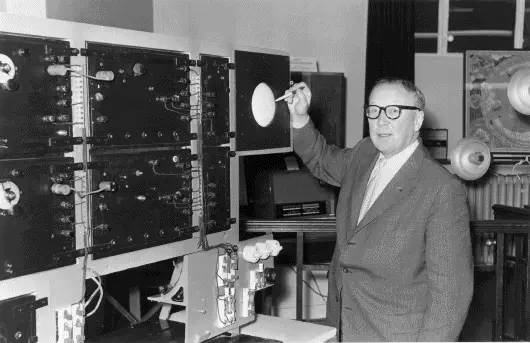
This apparatus is now in the London Science Museum.
Robert Alexander Watson-Watt was born in Brechin in 1892. He was educated at Dundee and the University of St Andrews. His first line of research was in meteorology where he used short-wave radio to detect the location of thunderstorms. By combining this direction finding technique with the ranging capabilities of ionosondes, he designed a system that was capable of detecting aeroplanes. He called this system Range and Direction Finding, though it later became known as Radio Detection And Ranging (RADAR). By the autumn of 1938 radar systems were in place along the south coast of Britain and by the Battle of Britain in 1940 were able to detect enemy aircraft at any time of day and in any weather conditions. Watson-Watt became scientific advisor to the Air Ministry in 1940 and in 1941 went to the United States to work on radar systems there.
He was elected a Fellow of the Royal Society in 1941 and Knighted in 1942 for his role in the development of radar.
